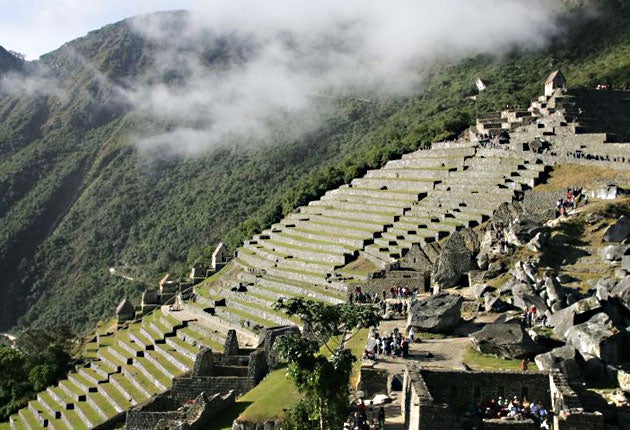So, was the 'lost' city of Machu Picchu ever lost?
US explorer who 'found' Inca site 'didn't get there first'

When the handsome American explorer Hiram Bingham set out from the Peruvian city of Cuzco by mule train in early July 1911, he had high hopes of discovering some lost Inca ruins.
Lavishly funded by the National Geographic Society and wealthy friends at Yale University, within days Bingham had stumbled upon Machu Picchu, the "lost city of the Incas". The city of stone terraces, carved out the Andean peaks, had been abandoned four centuries earlier and Bingham's discovery guaranteed him a place among the pantheon of the world's greatest explorers.
That legacy is now being challenged as historians turn up documents and maps suggesting the city had been lost and found several times before the photogenic Bingham's unforgettable account of discovering successive treasures of the city on a sharp forested ridge.
Something of a mountaineer and historian, Bingham later became the model for the bullwhip-cracking fictional hero Indiana Jones. His National Geographic expedition was meant to put an American stamp on global exploration, which – until then – had been dominated by British explorers such as David Livingstone.
The story goes that, within a couple of days of leaving Cuzco, Bingham came across a local man who told him about some Inca ruins.
Half-heartedly Bingham set out on a humid day and, after crossing plunging rapids on a spindly bridge of logs fastened to boulders, and hacking his way through jungle he rounded a promontory to become the first Westerner to clap eyes on the fabled Machu Picchu.
Soon, he was carting thousands of artefacts, mummies, stone carvings and other relics of the ancient Inca civilisation back to Yale.
The Peruvians have long acknowledged that Bingham was the "scientific discoverer" of Machu Picchu and that he cleared, photographed, and studied the ruins, making them known to the outside world through the pages of National Geographic. But academic politeness is being put to one side. Peru claims that the mummies and other artefacts were only ever loaned to Yale and is preparing legal action to recover artefacts that Bingham removed.
In recent months, evidence has emerged that a German engineer Augusto Berns may have discovered Machu Picchu 40 years earlier. Records have been found showing that, in the 1860s, Berns built a sawmill opposite Machu Picchu and raised money to plunder the site, all with the approval of the government in Lima.
In fact, almost from the moment National Geographic trumpeted Bingham's discovery, others rushed forward claiming to have beaten him to it. An English Baptist missionary, Thomas Payne, who lived in Peru from 1903 to 1952, claimed to have not only found Machu Picchu first but also said he later told Bingham about the ruined city and even assisted his 1911 expedition.
More recently Peruvian historians have found maps with references to Machu Picchu dating back to 1874. The most damaging evidence to undercut Bingham's legacy has come from a cartographer, Pablo Greer, in the magazine South American Explorer. He discovered that Berns spent years hunting for Inca sites with local guides. One Peruvian historian claims to have found evidence in Yale University's archives of a government document allowing Berns to plunder treasure from the region.
A dispute that seemed headed for an amicable settlement has now flared into a full-scale row with both Yale and the Peruvian government seizing on the latest revelations about the approval given to Berns to loot the site, in order to bolster their claims.
The Incas: Empire of the sun god
*The Incas started off as a tribe in what is now Peru and established an empire across South America that stretched from Colombia to Argentina. Known as fearsome warriors, they built their empire up in under a century through both force and diplomacy.
*However, it was destroyed when Spanish invaders, led by Francisco Pizarro, arrived in Peru in 1532. The Incas were unable to match the firepower of the Europeans, and the explorers also brought with them diseases such as smallpox that devastated the indigenous people.
*The Incas worshipped a number of gods. The most important of these was Inti the sun god. According to Inca belief, the Inca emperors descended from him.
Subscribe to Independent Premium to bookmark this article
Want to bookmark your favourite articles and stories to read or reference later? Start your Independent Premium subscription today.

Join our commenting forum
Join thought-provoking conversations, follow other Independent readers and see their replies